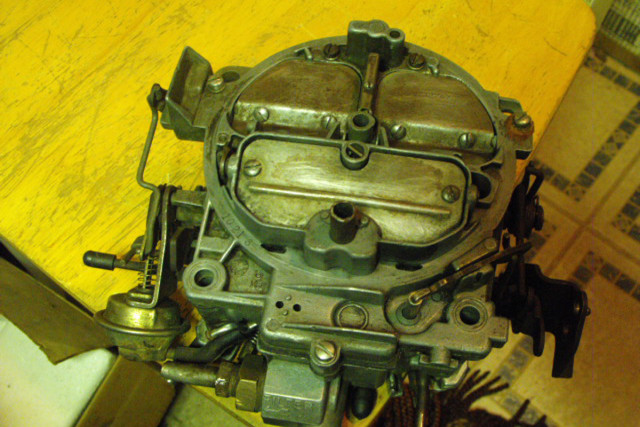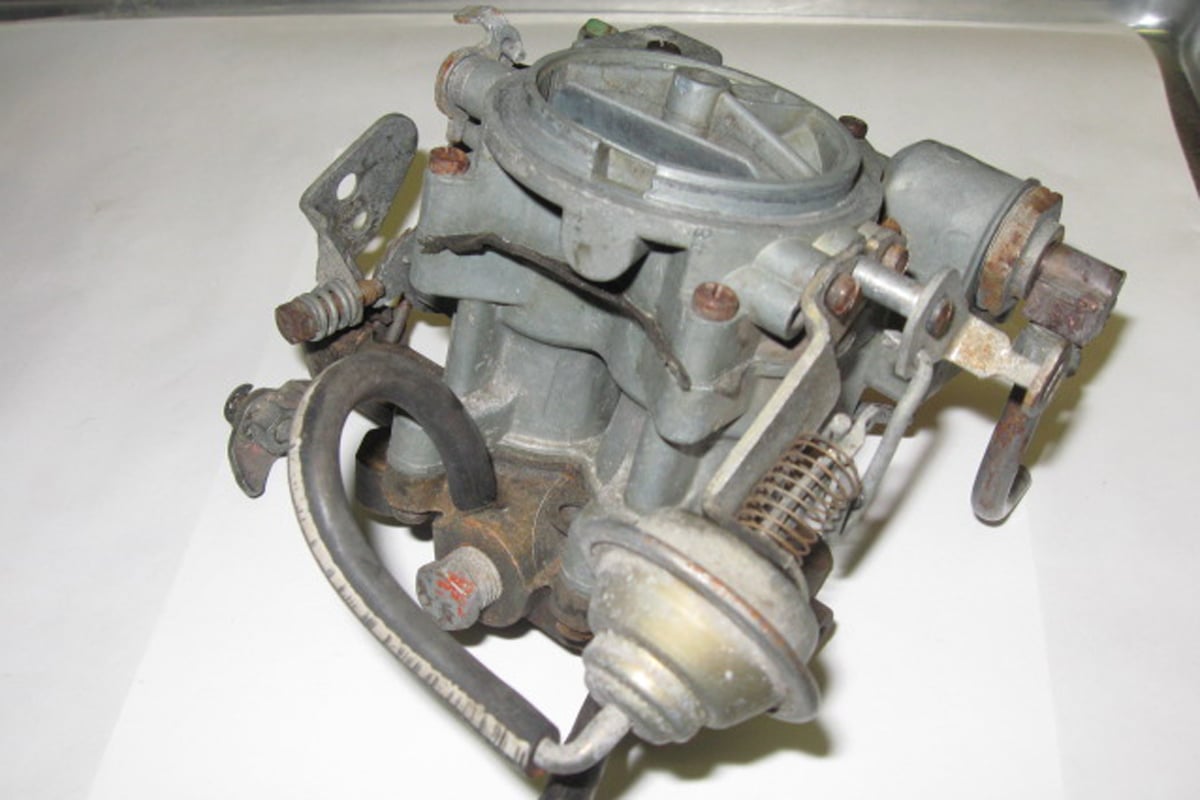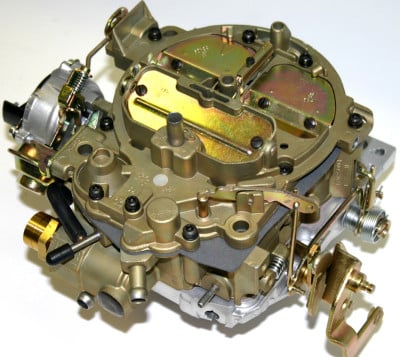When looking under the hood of most classic Chevy’s, odds are you are going to see some version of a Rochester carburetor. Although the manufacturer did not start their storied existence by manufacturing carburetors, their fuel-delivery offerings were — and still are, a mainstay with Chevrolet enthusiasts.
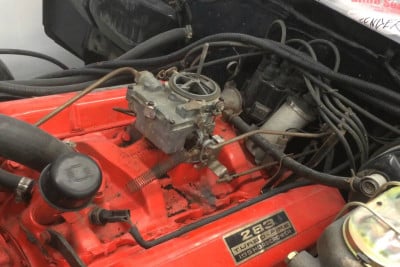 The Rochester two-barrel carburetor (called the 2G, and later 2GC and 2GV), was introduced in 1955, and use of the 2G carburetor in automotive applications ended in 1979. In actuality, there were several different styles of Rochester two-barrel carburetors manufactured since the 1955 release. There are two different size throttle bores on Rochester two-barrel carburetors, one is 1 1/4 and the other is 1 1/2 inches. All two-barrel carburetors had a cfm range of 285 to 450 cfm, and the original 2G used a manifold-mounted thermal-spring assembly that connected to the choke via a linkage rod. The 2GC came with an air horn-mounted spring/pod assembly. In this second configuration, the choke was operated via exhaust heat. When the engine was cold, the choke was held shut. As the engine warmed up, heat from the exhaust traveled through a tube that was attached to the exhaust manifold to the spring/pod assembly. The exhaust heat would unwind the spring in the spring/pod assembly, causing the choke to open as the engine warmed.
The Rochester two-barrel carburetor (called the 2G, and later 2GC and 2GV), was introduced in 1955, and use of the 2G carburetor in automotive applications ended in 1979. In actuality, there were several different styles of Rochester two-barrel carburetors manufactured since the 1955 release. There are two different size throttle bores on Rochester two-barrel carburetors, one is 1 1/4 and the other is 1 1/2 inches. All two-barrel carburetors had a cfm range of 285 to 450 cfm, and the original 2G used a manifold-mounted thermal-spring assembly that connected to the choke via a linkage rod. The 2GC came with an air horn-mounted spring/pod assembly. In this second configuration, the choke was operated via exhaust heat. When the engine was cold, the choke was held shut. As the engine warmed up, heat from the exhaust traveled through a tube that was attached to the exhaust manifold to the spring/pod assembly. The exhaust heat would unwind the spring in the spring/pod assembly, causing the choke to open as the engine warmed.
Choke operation of the 2GV carburetor (left), used a thermostatic spring mounted to the manifold, and was connected to the choke valve via a linkage rod. The 2GC (right), came with an air-horn-mounted spring/pod that operated the choke.
In the late ’60s, the choke assembly pod on the 2GC was moved to a lower position on the carburetor. This configuration continued until the end of 2G/2GC automotive production in 1979. The 2GV carburetor used a vacuum-break diaphragm. When a 2GV carburetor was installed, a thermostatic spring was mounted to the manifold, and was connected to the choke valve via a linkage rod.
You can read all the technical information about Rochester two-barrel carburetors right here.
Rochester’s Quadrajet carburetor was introduced in 1965, and even though it received many modifications over the years to meet ever-tightening emissions regulations, it remained in production until the 1980s. It even became computer controlled in 1980. Although the Quadrajet was never meant to be a performance-oriented carburetor, it was installed on some musclecars, including 327, 350, 396, 427 and 454 cubic-inch Chevy engines. During its 25-year life span the Quadrajet was installed on more GM vehicles than any other model carburetor.
The spread bore design features primary venturii that are much smaller than the secondary venturii. Most Quadrajet carburetors delivered roughly 750 cfm, but some reached closer to 800 cfm. Most Quadrajet carburetors used a vacuum-operated piston that moved the primary metering rods to control the blending of air and fuel. This allowed the mixture to be at a lean condition during low load conditions, and richen when experiencing high load conditions.
Quadrajet carburetors have mechanical-secondary throttle plates that are operated by a progressive linkage, and use an on-demand air valve plate above the secondary throttle plates. This plate looks similar to a choke plate over the secondaries. The air valves are connected to the secondary fuel-metering rods by a cam and linkage. As airflow through the secondaries increases, the air valves are pushed down, rotating a cam that lifts the secondary metering rods. These metering rods are tapered, and as they move, more fuel is delivered. What this means is the position of the air valve will control both fuel and air flow through the secondary venturii, even if the secondary throttle plates are fully opened. This is why the Quadrajet functions as a vacuum-secondary carburetor and only delivers more fuel as needed.
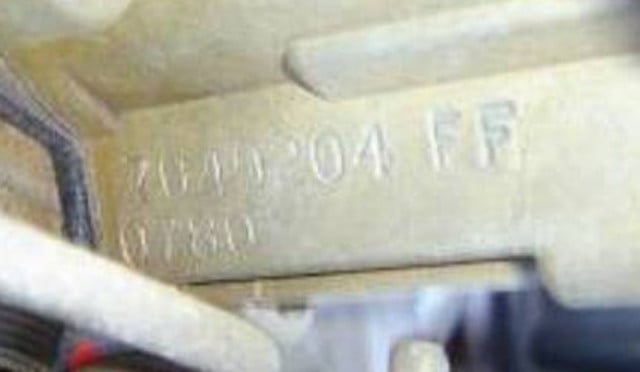
Although hard to to distinguish in this photo, the numbers are 7040204FF. When broken down, you get: 704 (1970-1975), 0 (1970), 2 Quadrajet (four-barrel) Federal Standards, 0 (division; Chevrolet), 4 (automatic transmission), FF (customer code). The four-digit number is the actual manufacture date. 0780 (March 19, 1970)
Starting around 1968, there were numbers stamped on a flat area of the Quadrajet’s main body, just above the secondary throttle shaft. In most cases, these numbers can be used to identify the year and original application of the carburetor. Quadrajet carburetors built by Rochester through 1974, have numbers starting with 70, and beginning in the 1975 model year they have numbers starting with 170.
If you’re looking for more information about Quadrajet carburetors, check here.



